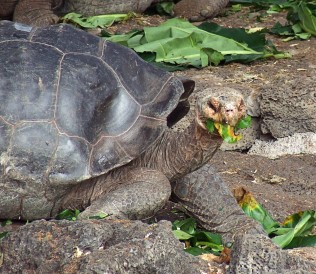 The Galapagos Islands sit on the Equator approximately 620 miles off the coast of Ecuador as a series of remote islands created by lava formations, similar in their nature to Hawaii. Boasting an ecosystem uniquely showcasing incredible biodiversity and exotic landscapes, they are quite deserving of their nickname given by Charles Darwin during the time he spent there developing his theory of natural selection – the “Enchanted Isles” indeed evokes images of beauty. The islands are a traveler’s dream, with everything from blue bays and tropical beaches to forests of cacti and misty emerald highlands.
The Galapagos Islands sit on the Equator approximately 620 miles off the coast of Ecuador as a series of remote islands created by lava formations, similar in their nature to Hawaii. Boasting an ecosystem uniquely showcasing incredible biodiversity and exotic landscapes, they are quite deserving of their nickname given by Charles Darwin during the time he spent there developing his theory of natural selection – the “Enchanted Isles” indeed evokes images of beauty. The islands are a traveler’s dream, with everything from blue bays and tropical beaches to forests of cacti and misty emerald highlands.
Pinzón is one of the smallest of the islands and has an area totaling only seven square miles. It was named for the brothers who captained the Pinta and the Nina on Columbus’s voyage to the New World. Despite its position at the center of the island cluster, Pinzón still finds itself generally isolated from the other islands. Surrounded by deep waters and decorated primarily with rocks and spiny shrubs, that particular island has not exactly been a top destination for the increasing numbers of visitors heading to the Galapagos Islands.
Yet there exists one species that call Pinzón home: the amazing giant tortoises. They can live over 200 years and thrived on the island for many centuries. That is until a visitor arrived.
As pirates landed amidst the Galapagos Islands in the mid-18th century, they unknowingly delivered a plague in the form of black rats. Since then, the native species of giant tortoises have been fighting a losing battle for their very existence as the rats continually fed on their eggs and young tortoises unable to defend themselves.
By the end of the 20th century, it looked as though the giant tortoises of Pinzón would follow the sad story of Lonesome George. He was the last surviving member of a similar species until he passed away in 2012 at only 102 without ever finding a mate. His legacy lives on through an exhibition at the American Museum of Natural History in New York.
Shortly after the establishment of the Galapagos National Park and Charles Darwin Foundation in 1959, conservationists began working to save the declining tortoise population. By taking both adult members of the species and unhatched eggs into captive breeding programs and releasing the tortoises back into their native habitat around 4 or 5 years of age, they worked to bring the numbers back up. Still, due to the endless threat brought by the rats, it was feared the tortoises would never be able to reproduce naturally in the wild.
It wasn’t until Galapagos National Park and its partners launched another program dedicated to exterminating the rats that conservationists began to have hope that the giant tortoises might be able to reverse their “extinct in the wild” status. The program, accomplished by dropping a poison specifically targeted to attract the rats and repel other creatures, would allow the complete elimination of the threat to the young, giving the species their first chance to thrive naturally in over a century.
That chance became a success story when the poison was delivered from helicopters onto the island in December 2012. With an astounding 180 million rats out of the picture, native juvenile tortoises and eggs began to be reintroduced from captive breeding programs, the hatchlings finally had a real opportunity at survival in the wild. The first babies born in the wild in over a century were spotted on Pinzón in December 2014.
The tale told of the recovering giant tortoise population is an uplifting one, instilling a feeling of hope for other rare and unique species that face extinction. But it should also be a reminder of the precarious balance that nature sometimes maintains, and what a detrimental effect the human race can have when we do not exercise care and caution.
Read Ethical Traveler's Reprint Policy.
